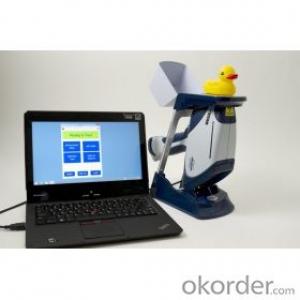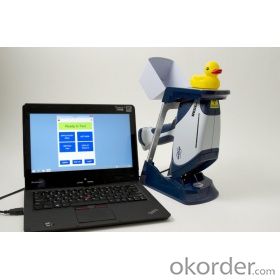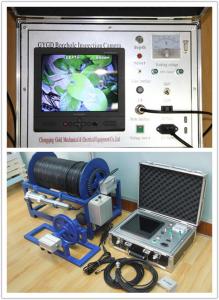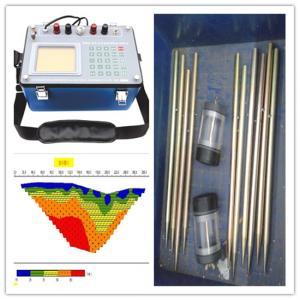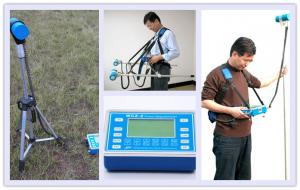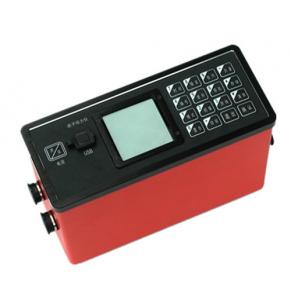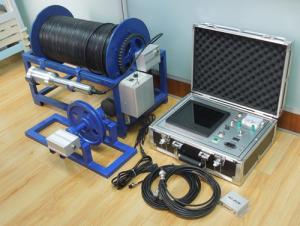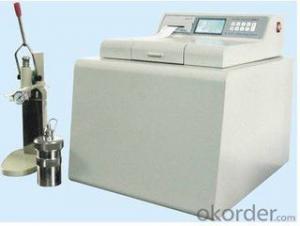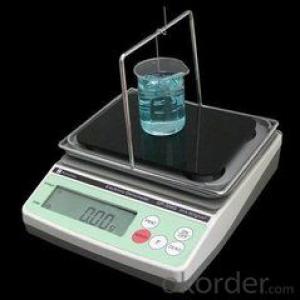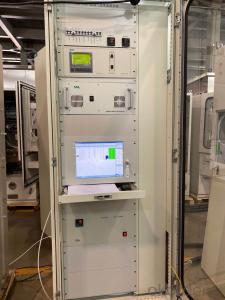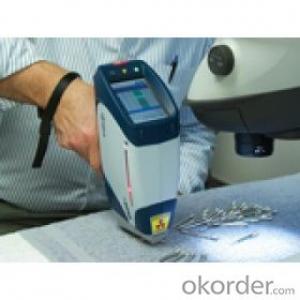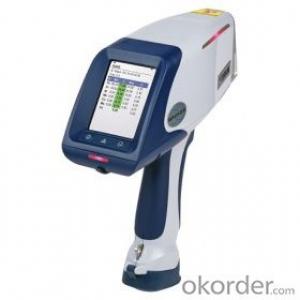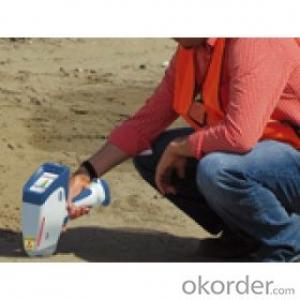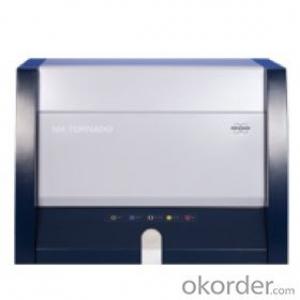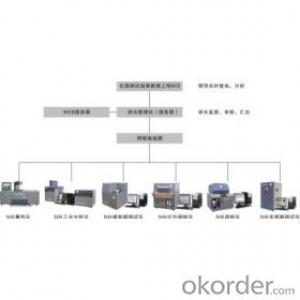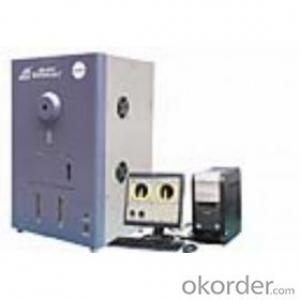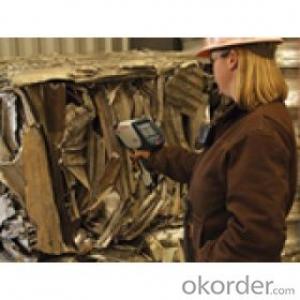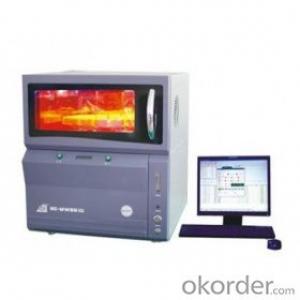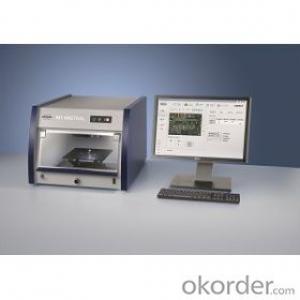ROHS handheld analyzer
- Loading Port:
- China Main Port
- Payment Terms:
- TT OR LC
- Min Order Qty:
- -
- Supply Capability:
- -
OKorder Service Pledge
OKorder Financial Service
You Might Also Like
ROHS handheld analyzer --ROHS (material) Screening
In recent years, more and more manufacturers to follow a series of requirements for the content of the material components into restrictions, such as the typical EU Hazardous Substances (ROHS-2), and the 2008 US CPSIA limits on the maximum content of lead in toys these regulations make more and more manufacturers choose to use XRF strict quality control. Handheld XRF has become the industry's widely accepted products, and forgive screening tool, which for heavy metals and other properties of the substance detection, which is quite effective
Certified by the US Consumer Product Safety Commission, handheld XRF is a very effective detection tool. NDT S1 TITAN provides enterprise can ensure the production of lead-free and comply with ROHS safety instructions for toys and other consumer products for effective detection of heavy metals. Where the detection limit of lead, mercury, chromium, arsenic, antimony and barium, and other harmful elements even reach ppm level
Easy to use: S1 TITAN is currently available on the lightest portable XRF analyzer tube. User interface is designed to provide intuitive operation and results are presented. Data management and transmission is extremely easy
Intuitive User Interface
Requires minimal operational training
Wide sample identification applications
Light weight -1.5kg / 3.3lbs, with battery
Environmental conditions: Protection class IP54; S1 TITAN can withstand all environmental field operation in the design, including wet and dusty environments conditions
Sealed waterproof and dustproof design
Rubber molding, durable
To prevent the intrusion of dirt and sand
Stand can be used to measure a sample of small and complex
Operating temperature: -10 ℃ to ± 50 ℃
Sample temperature (intermittent use): 150 ℃ for Ultralene window, 500 ℃ for Kapton window
TITAN anti-tie detectors: the detector was pierced to prevent the ultimate protection facilities, including this unique patent-pending S1 TITAN accessory can protect the detector window is not pierced sharp pieces of scrap metal and waste lines and other objects, while maintaining the S1 TITAN for almost any material quickly and accurately analyze
The expensive detector to minimize the damage piercing
Improve equipment uptime
No need to replace the window when measuring light elements or recalibrate
Even the measurement of magnesium, aluminum, silicon and other light elements also analyze the effectiveness without sacrificing any
ROHS II (2011/65 / EU) directive compliance
Restriction of hazardous substances: lead, chromium, mercury, cadmium, PDBE, PDB
CE certification of new requirements
Covering all electronic products
All restricted materials can be measured
CPSIA 2008- unleaded toys
Restricted lead content in children's products
Lead content must be less than 100ppm
Cover all toys, clothing and other products
Non-destructive testing to ensure that products meet the requirements
Trusted electronic products
A high degree of reliability for aerospace and medical applications
Provide products needed for the normal operation of lead content
Easily determine the optimum levels of lead
Other Restricted Materials Applications
Halogen-free production
Packaging Act
California Proposition 65
Safe Drinking Water Act
Alloy: standard alloy (Ti - uranium) can be single-phase measurements, to support the nominal concentration of light elements
Alloy LE: alloy analysis, including light elements. Most alloys contain ethnic specific types of high accuracy calibration
Precious Metals: Precious metal alloys optimization settings. Containing alloy grade ID and carat (Karat) display
Low levels of copper in the lead: Detection and measurement of low levels of lead in the copper (lead content up to 2%) in order to comply with the California Safe Drinking Water Act and Proposition 65. This calibration only for 800 and 600
ROHS (Material): for ROHS I / II screening of consumer products. Automatic mode and the user can select the calibration mode, used in plastics, the density of the material as well as user-defined limit IEC metal
ROHS (metal): for metal ROHSI / II of the specification, consumer products, metal, solder and security applications of the test water bill
ROHS (plastic): for non-metallic (plastics and polymers) ROHSI / II of the standard, non-metallic materials and consumer products use of safe drinking water bill each test, including chlorine
Limestone: used in cement, creating and building industries, in order to facilitate analysis of lime, cement and gypsum raw materials and steel. This calibration only for 800 and 600
Mining exploration: for mining, exploration, drilling machine-level control. Contains GeoChem Trace and GeoChem General. When using 800 and 600, this calibration support all light elements by measuring Division Duplex
Soil: Ideal for field testing of contaminated soil and reclamation operations under the EPA 6200. This calibration can be used for catalytic converters and electronic waste recycling applications. When using the 800 and 600, this calibration support all light elements by measuring Division Duplex
- Q: Which is better, sic-100 multi component gas analyzer and gas chromatograph?
- Power environmentAccess to power GYE99 chromatographic analyzer for 220V + 10% (50Hz + 0.5 Hz), can provide the power of not less than 2000W. In order to protect the personal safety of chromatographic analyzer, GYE99 panel and the case in accordance with the International Electrotechnical Association, with three core power line grounding.
- Q: The difference between paramagnetic oxygen analyzer and zirconia oxygen analyzer
- Zirconia oxygen analyzer: the measured gas (flue gas) through the inner sensor into the zirconia tube, the reference gas (air) through natural convection into the sensor outside, when the oxygen concentration inside and outside of the zirconium pipe is not at the same time, the zirconia tube inside and outside oxygen concentration potential (in reference gas under conditions of uncertainty output, zirconia oxygen concentration potential and sensor temperature and the measured gas concentration is a function relationship between the oxygen concentration potential) was transformed into display instrument and the measured oxygen content in flue gas is the standard signal linear relationship, RHO instrument display and output.
- Q: What are the differences between laboratory equipment and calibration?
- Verification of building standards (various block used for high pressure laboratory / nano measuring / Testing Laboratory School
- Q: Major of Applied Chemistry has two directions: fine chemical and instrumental analysis. Which one should be chosen?
- Instrument analysis direction is good, and now are high paying technical materials, and the state attaches great importance to material analysis, and material analysis is instrument analysis direction, work easier to find.
- Q: Notes on the use of oxygen analyzers
- Micro analysis, to avoid all kinds of pipe fittings, valves, headers and other dead corners on the sample gas pollution, therefore, we must simplify the gas path system as much as possible, the connection parts of small corners. The power to prevent dissolved oxygen pollution caused by pollution, it is best to use water seals, oil seals and wax sealing equipment, in order to ensure accurate data.
- Q: What kind of electrical, automatic and instrument equipment are needed in the sewage treatment plant?
- Water quality test equipment: dissolved oxygen, turbidity, suspended matter concentration, pH meter, COD instrument, ammonia nitrogen meter, phosphate, etc..Automatic instrument and meter: frequency converter, PLC control cabinet, upper computer, touch screen and so on.Aeration equipment: including blowing equipment, aerator and corresponding accessories.
- Q: What is an infrared spectrum analyzer?
- Near infrared spectrometer is a kind of indoor spectrum analysis instrument, high resolution spectral reflectance using grating scanning method to obtain the target near infrared band. The technology fields: instrumentation, chemical analysis of the main technical indicators: spectral range: 1000 ~ 2500nm spectral resolution: 5nm (which can be designed according to the actual application requirements)
- Q: What is instrumental analysis?
- Instrument analysis refers to the use of more complex or special equipment, a kind of method by measuring the material parameters and changes of some physical or physical and chemical properties to obtain chemical composition, composition and chemical structure information.
- Q: Audio analyzer for audio analyzer
- In combination acoustics, for example, the term "timbre" is often used to evaluate its performance. The so-called tone is the difference of sound caused by different harmonics. The so-called "balance" of sound refers to the amount of sound that sounds in full frequency range and sounds natural. The audio analysis instrument is the role of the evaluation equipment industry terms expressed in the form of various quantitative parameters, the measurement of distortion characteristic parameters corresponding to the harmonic tone "is the" balance "is related to the frequency of equipment in the whole audio range of distribution of the ring.
- Q: With the development of science and technology, why can't instrumental analysis replace chemical analysis completely?
- The scope of instrumental analysis and chemical analysis is differentChemical analysis is mainly applicable to the content of analyte in constant or half trace components, while instrumental analysis is mainly used for the analysis of trace or even trace components.
Send your message to us
ROHS handheld analyzer
- Loading Port:
- China Main Port
- Payment Terms:
- TT OR LC
- Min Order Qty:
- -
- Supply Capability:
- -
OKorder Service Pledge
OKorder Financial Service
Similar products
Hot products
Hot Searches
Related keywords
